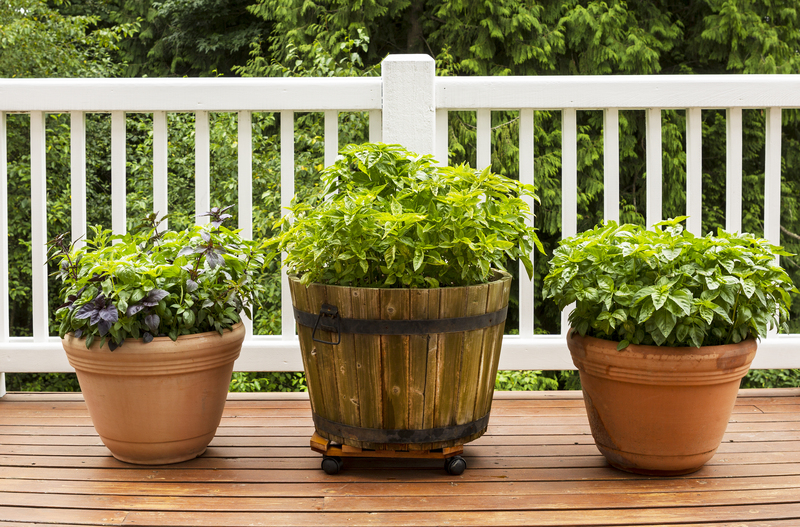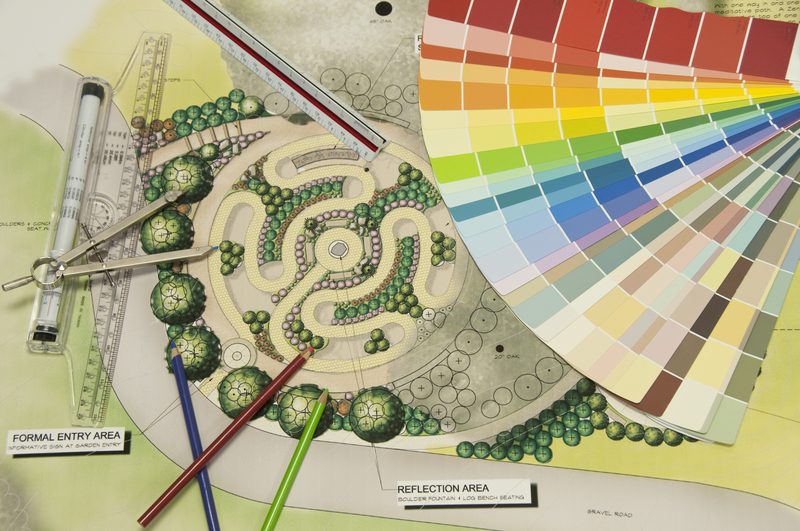Breathing New Life into a Forgotten Garden
Posted on 01/09/2025
Breathing New Life into a Forgotten Garden: A Comprehensive Guide
There's something magical about transforming neglected gardens into vibrant sanctuaries bursting with color and life. In our hectic modern lives, many home gardens are left unattended, slowly slipping back into nature's embrace. Yet, the journey of breathing new life into a forgotten garden is one of the most rewarding projects a homeowner or community can undertake. This article will provide a step-by-step, SEO-optimized guide filled with practical tips, expert advice, and inspiring ideas to help you rehabilitate your abandoned outdoor space.

Why Restore a Neglected Garden?
- Environmental Benefits: Gardens improve local biodiversity, assist in carbon absorption, and offer homes for pollinators.
- Aesthetic Value: Revived gardens turn an eyesore into the jewel of any property.
- Mental and Physical Well-being: Gardening is proven to reduce stress and promote physical activity.
- Increased Property Value: Lush landscaping can significantly boost your property's market value.
Choosing to revive a forgotten garden is more than a chore--it's a pathway to personal fulfillment while enhancing your local ecosystem.
Assessing the Forgotten Garden
Before you dive in, dedicate time to assess the current state of your neglected yard. This initial evaluation will guide your restoration plan.
- Soil Health: Test the soil's pH, nutrients, and drainage. Overgrown areas often have imbalanced or compacted soil.
- Plant Inventory: Identify existing plants--are there old perennials waiting for attention? Do invasive species dominate?
- Structural Features: Note the condition of paths, fences, old furniture, and water features for possible repair or replacement.
Document Your Findings
Sketch the garden or take photos before you begin. This not only helps with planning but also gives you a snapshot to compare progress as you transform your neglected garden.
Clearing and Cleaning: The Essential First Steps
A fundamental stage in giving your abandoned garden a new lease on life is clearing out years of neglect. Though daunting, systematic cleanup sets a strong foundation.
Tackling Overgrowth
- Start by removing large debris: broken pots, branches, rubbish, and neglected furniture.
- Cut back overgrown shrubs, vines, and weeds. Use tools like pruners, saws, and shears--wear gloves for protection.
- Identify and remove invasive species at the root to prevent regrowth.
Cleaning Hardscapes and Structures
- Power wash patios and paths to remove decades of moss and buildup.
- Check fences and sheds for rot; repair or replace as needed to restore safety and aesthetics.
Tip: Compost healthy green waste to use later as nutrition for your remodeled garden beds.
Designing Your Revived Garden
It's time to reimagine your outdoor haven. Whether you prefer classic cottage beauty, modern minimalism, or a wildlife-friendly oasis, thoughtful design is crucial.
Evaluate Light and Space
- Notice which parts receive full sun, partial sun, or shade--essential for plant selection.
- Plan circulation: How do you want to move through and use the space (paths, seating, play areas)?
Choose Your Garden Style
- Cottage Garden: Dense, colorful, and informal--perfect for pollinators.
- Contemporary: Clean lines, geometric beds, and low-maintenance plants.
- Wildlife-Friendly: Native blooms, water for birds, and diverse plantings.
Rejuvenate Old Favorites
Some plants may be salvageable. With careful pruning and nourishing, spindly roses or neglected shrubs can recover and thrive.
Restoring the Soil: The Heart of Every Garden
Healthy soil is the engine that drives a lively garden. Years of neglect lead to compaction and nutrient depletion, so soil regeneration is critical when restoring old gardens.
- Test and Amend: Use a DIY or professional soil test. Amend with compost, aged manure, or organic fertilizers.
- Aerate: Loosen hard-packed soil by hand or with a garden fork. Aeration improves water movement and root growth.
- Mulch: Apply a thick layer of organic mulch to maintain moisture, suppress weeds, and slowly improve soil texture.
The Magic of Microbes
Encourage earthworms and beneficial microbes with regular additions of compost. Their activity breaks down organic matter into rich, friable soil--ideal for revitalizing a forgotten landscape.
Selecting and Planting New Life
Now comes the most exciting part of reviving an abandoned garden: choosing fresh plantings. Your choices will shape the mood, utility, and sustainability of your space.
What to Plant?
- Native Plants: These are adapted to local conditions, require less water, and support native wildlife.
- Perennials: Provide long-lasting color and structure with minimal maintenance.
- Edibles: Integrate vegetables, herbs, and fruit trees for a productive twist.
- Seasonal Annuals: Add instant, bright impact while new perennials establish.
Ensure grouping by water and sun needs for efficient care, and consider succession planting for year-round interest.
Creating Wildlife Havens in Restored Gardens
Modern gardening embraces biodiversity. When breathing new life into neglected spaces, think beyond aesthetics to attract and support pollinators, birds, and beneficial insects.
- Plant flowering natives for bees and butterflies.
- Install bird houses, bee hotels, and small piles of logs or stones for habitat.
- Leave some wild corners--undisturbed patches can harbor useful predatory insects.
- Consider a pond or simple water feature for dragonflies and frogs.
A diverse, living garden is more resilient and engaging, offering continuous spectacle and natural balance.
Watering and Maintenance: Setting New Habits
Routine care is essential to maintain the beauty and health of your restored garden. Build sustainable, water-wise habits from the beginning:
- Install drip irrigation or soaker hoses for efficient watering.
- Water deeply but infrequently to encourage strong root systems.
- Mulch regularly to protect soil moisture and reduce weeds.
- Weed frequently--a little time each week keeps beds clear and healthy.
- Feed with compost or slow-release fertilizers tailored to your plant selections.
Adding Personal Touches: Furniture, Art, and Lighting
Take your rejuvenated space from functional to unforgettable with garden decor and ambiance. Here are creative ideas for expressive finishing touches:
- Upcycle old benches or chairs with fresh paint and weatherproof cushions.
- Install solar or LED garden lights to highlight paths and feature plants.
- Add wind chimes, mosaic stepping stones, or handmade clay pots for personality.
- Welcome visitors with a rustic gate or trellis archway.
Let your garden reflect your character and lifestyle--the ultimate mark of a revitalized landscape.
Before and After: Celebrating Your Garden Restoration
Document your journey with photos and notes. Not only will this serve as motivation during setbacks, but sharing your progress online can inspire others to breathe new life into forgotten gardens in their own neighborhoods.
- Host a garden party to unveil your renewed space.
- Trade cuttings or seeds with friends and local garden clubs.
- Start a gardening journal or blog to share lessons and successes.

Common Challenges and Solutions
Pests and Diseases
Old gardens may harbor pest cycles or fungal issues. Remove diseased material, rotate plant families, and introduce beneficial insects like ladybugs to restore balance naturally.
Persistent Weeds
Deep-rooted weeds require persistent hand removal or targeted organic treatments. Avoid chemical solutions, especially if you are growing edibles.
Budget Constraints
Transforming a neglected garden can be cost-effective by propagating plant cuttings, swapping with friends, or purchasing bareroot or young plants.
Conclusion: The Lasting Joy of a Revitalized Garden
Breathe new life into your forgotten garden and witness a dynamic transformation--from tangled, unused ground to an engaging, living sanctuary. Beyond mere curb appeal, restoring old gardens enriches the environment, supports wildlife, and provides personal satisfaction. By following the steps outlined above, you can nurture beauty, biodiversity, and harmony right outside your door.
Whether you're inspired by cottage nostalgia, sleek modernism, or wild eco-friendly havens, start today and let your *renewed garden* become a source of pride and joy for years to come.
Begin your journey now--uncover the hidden potential in your landscape and transform the forgotten into the unforgettable.
```
